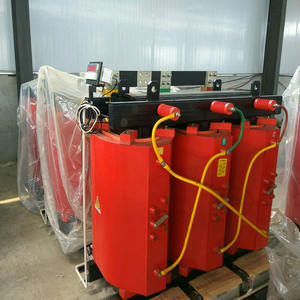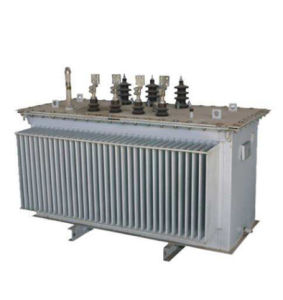Electronic Components Supplier | Transformers, Inductors, Inverters
The global pursuit of sustainability and safety is reshaping the electrical industry. Dry type transformers are at the core of this transformation. They are rapidly replacing old oil immersed models. But did you know that ‘dry’ involves different technologies? The two most common categories are air-cooled (including VPI and VPE) and resin cast.
This article will compare these two mainstream types of dry-type transformers. We will help you understand their differences. Our goal is to guide you in selecting the best solution for your commercial or industrial applications by 2024.

dry-type transformers
1.Why is the transition to dry-type transformers accelerating
Several key trends are driving the adoption of dry-type transformers.
- Stricter safety regulations: Global building codes are becoming increasingly stringent, especially for indoor electrical installations. Dry type transformers, with their non combustible characteristics, are easily able to meet the requirements.
- Sustainable Development Goal: The company focuses on reducing its environmental footprint. Due to the fact that dry-type transformers do not use oil, they eliminate the risk of pollution.
- Urbanization: With the development of cities, electrical equipment is placed closer to people, such as basements, rooftops, and residential areas. Security cannot be compromised.
- Low total cost of ownership: Although the initial price may be higher, reduced maintenance costs and no need for oil testing make its long-term cost lower.
2.Air cooled dry-type transformers (VPI and VPE)
Air cooled transformers use ambient air as the main cooling medium. The winding is insulated with insulating paint or resin, but still open to air for cooling. We can divide it into two subtypes.
2.1. Standard VPI (Vacuum Pressure Impregnation) Transformer
These are the main forces in the field of dry-type transformers.
Cooling and insulation: They rely on air circulation to dissipate heat. The VPI process provides a protective barrier on the winding.
Advantages:
It is cost-effective for standard power levels.
For most indoor environments, it is sturdy and reliable.
Can be repaired when damaged.
Disadvantages:
If not maintained properly, it is more susceptible to moisture, dust, and pollutants in the long run.
It may be slightly louder than resin casting type.
Most suitable for: general manufacturing factories, HVAC systems, and commercial buildings with clean and controlled environments.
2.2. Advanced VPE (Vacuum Pressure Encapsulated) Transformer
The VPE transformer is a more flexible version of the air-cooled type.
Cooling and insulation: They are also air-cooled, but the thick epoxy resin coating provides a higher level of protection.
Advantages:
Has excellent resistance to harsh environments such as humidity and corrosion.
More durable than standard VPI.
Disadvantages:
The initial cost is higher than VPI.
Repairing may be more difficult.
Best suited for: food and beverage processing, chemical plants, sewage treatment facilities, and coastal areas.
3.Resin cast dry-type transformers
Resin cast transformers represent a different design concept. Their windings are completely sealed and not “air-cooled” in the same way.
Cooling and insulation: The iron core and coil are wrapped in solid epoxy resin. Heat is transferred to the surface through the resin and then dissipated through the air. Large air ducts are usually poured into the windings to improve cooling.
Advantages:
Provide maximum protection against humidity, dust, and chemicals.
Excellent fire safety performance (low flame spread, self extinguishing).
It runs very quietly and is suitable for areas that are sensitive to noise.
Very little maintenance is required.
Disadvantages:
The initial cost is the highest in dry-type transformers.
Heavier and larger than air-cooled models of the same level.
Usually cannot be repaired on site; The entire unit needs to be replaced.
Best suited for: critical infrastructure such as data centers, hospitals, airports, subway systems, skyscrapers, and public spaces.

modern transformer technology
4.Positive comparison: How to choose
So, which dry-type transformer is suitable for you? Please consider the following questions:
- How is the operating environment?
- Clean and dry? -> VPI
- Damp or corrosive? ->VPE or resin casting
- Extremely harsh or sensitive? ->Resin casting
- What is the budget?
- Is the initial budget tight? -> VPI
- Focus on long-term value and minimal downtime? ->VPE or resin casting
- How important is noise?
- Very important (e.g. office, hospital) ->resin casting
- What are the fire safety requirements?
- Require the highest standard ->resin casting
Both air-cooled (VPI/VPE) and resin cast transformers are excellent choices over liquid immersed units. Your decision ultimately depends on your specific application, environment, and budget.
For standard applications, air-cooled VPI transformers provide good value. For challenging conditions, please upgrade to the VPE model. The excellent performance of resin cast transformers is worth investing in for critical tasks, sensitive and public environments. By understanding these key types of dry-type transformers, you can make powerful decisions to ensure safety, reliability, and efficiency for many years to come.
Luoyang Datang Energy Technology Co., Ltd. is a high-tech enterprise integrating R&D, manufacturing and supply of power equipment such as transformers, new energy components, distribution cabinets and inverters. With technological innovation as the core, we focus on creating high-reliability and high-performance power solutions to serve global customers. With a strict quality control system and international standard certification, we continue to output excellent products and enable customers to build safe and stable power systems.







